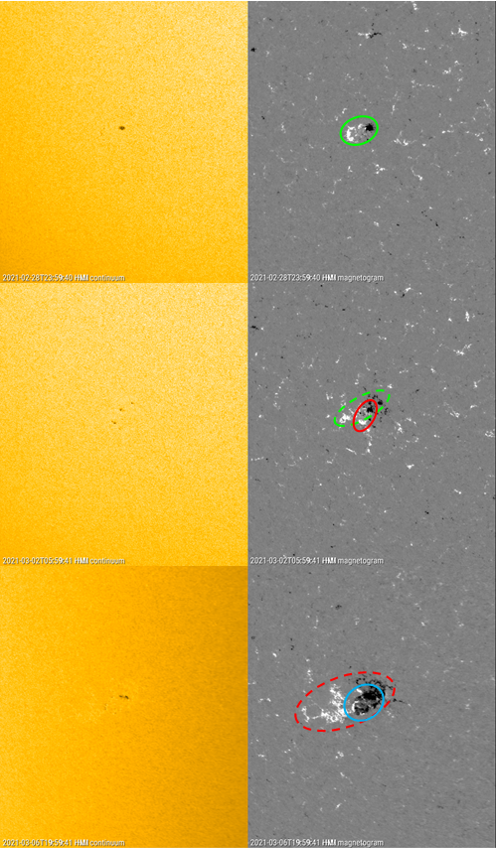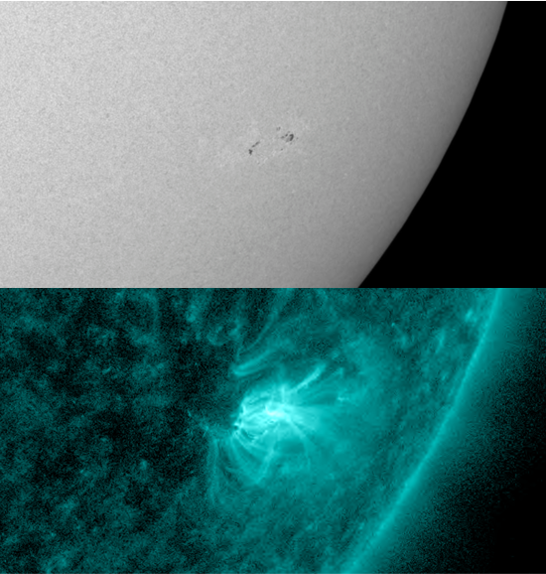NOAA 2806 emerged on 28 February as a small compact sunspot region. It was decaying fairly quickly when, on 2 March, there was a renewed injection of magnetic flux adding some small spots to the group. Nonetheless, the region had decayed into a spotless plage by 5 March, and that seemed the end of it. Then surprizingly, there was a third injection of magnetic flux within the same active region, resulting in a relatively large sunspot area for this group during its transit over the solar disk. The sunspot region was about to rotate over the southwest solar limb by 9 March. The evolution can be seen in the SDO-imagery (created with the SWHelioviewer), with on the left white light images and on the right the magnetograms (the white and black patches denote areas of opposite magnetic polarity). The 3 magnetic flux emergences on 28 February, 2 March and 6 March are indicated by respectively green, red and blue ellipses. The dashed ellipses outline the "old" active regions. NOAA 2806 originally emerged in the quiet photosphere, so there's no dashed ellipse for the 28 February image.


It is certainly not uncommon that new magnetic flux emerges in or near the same active region, even if that region is already spotless. In fact, this clustering tendency of magnetic activity, i.e., active regions emerging in the immediate vicinity or within the boundaries of an existing active region, was already noted by Cassini in 1729 (see van Driel-Gesztelyi and Green (2015) for more details). Further research in the 1980s and 1990s showed that there is a 10 to 22-fold higher emergence rate within existing active regions than in the quiet sun. Repeated episodes of major flux emergence within an evolving active region may lead to increased magnetic complexity, and thus flaring activity, in particular when the new flux emerges right in front of just behind an active region. Spots of opposite magnetic polarity are then pushed towards each other, which may result in magnetic reconnection and thus strong solar flares. Such was the case e.g. on 9 August, when new magnetic flux emerged near the trailing portion of NOAA 1263 which resulted in an X6.9 flare, the 3rd strongest of the previous solar cycle (SC24 - (see this STCE newsitem). For NOAA 2806 however, the emergence of the new flux was too weak, too short-lived, and pretty much of the same magnetic configuration as that present in the existing active region, resulting only in some low-level B-class flaring on 7 and 8 March (see underneath).






